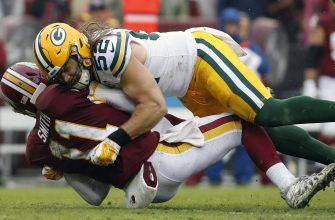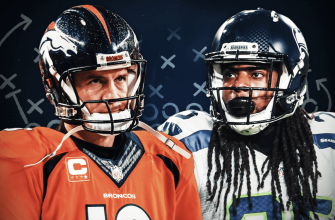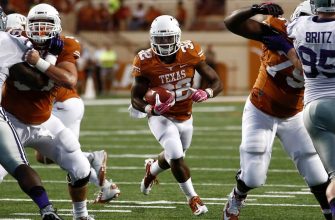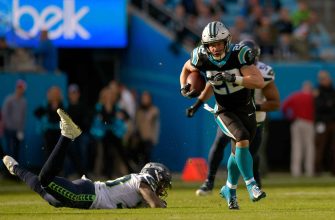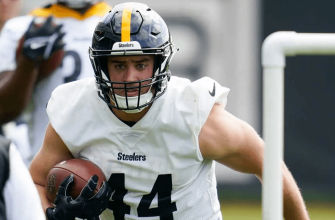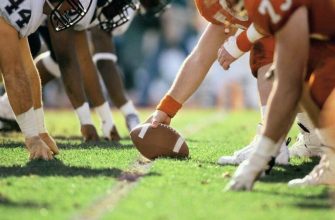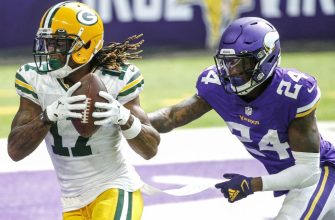A block in the back is an illegal block or tackle in American football that occurs when a player contacts an opponent from behind and above the waist. It is defined in the NFL rulebook under Rule 12, Section 1, Article 6 which states “A block in the back is a block that is delivered from behind an opponent above his waist.”
The rule is in place as a safety precaution to protect players from dangerous hits from behind that they cannot see coming. The penalty for a block in the back is 10 yards from the spot of the foul.
When Blocks In The Back Occur
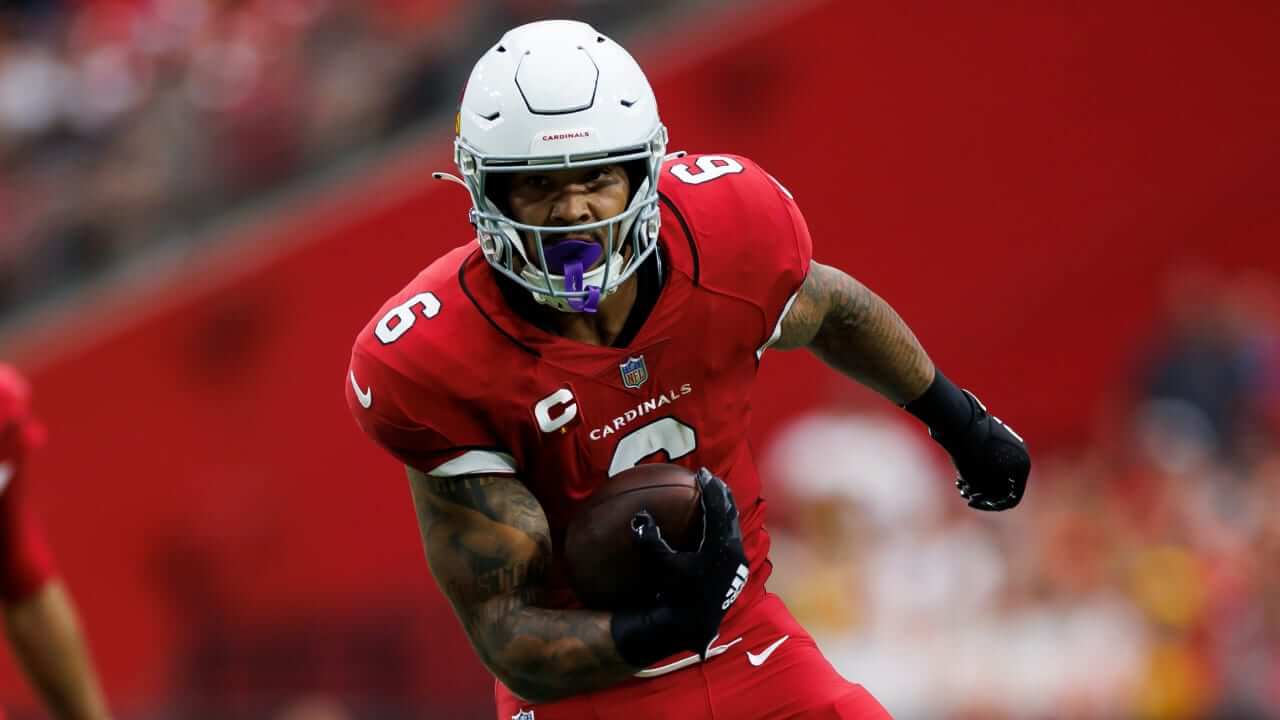
Blocks in the back most commonly occur on punts and kickoffs, when the receiving player is focused on fielding the ball and not able to see defenders approaching from behind. The receiving player is vulnerable in this situation, as they cannot protect themselves or brace for impact. Defenders taking advantage of this by hitting the receiver in the back above the waist is considered an unsafe play.
Other common situations for blocks in the back are when offensive linemen are retreating to protect the quarterback or on running plays when a defender sheds their block and pursues the ball carrier. Offensive players may attempt to impede the defender’s progress by blocking them in the back. While their intent is to protect their teammate, this type of block is illegal.
The key factors are that the player being blocked cannot see the contact coming, and the blocker targets their back above the waist. This puts the player at risk of injury.
Rules Around Blocks In The Back
Blocks in the back are illegal in both the NFL and NCAA. According to the NFL rulebook, a block in the back is when a player blocks an opponent from behind above the waist. Specifically, it occurs when a player uses their hands or arms to push an opponent from behind above the waist.
The NCAA rulebook similarly defines a block in the back as contacting an opponent above the waist from behind and knocking them down. Blocks in the back are considered illegal in both leagues, except for very specific circumstances like during a scrimmage kick or punt return.
The intent of the rule is to protect players from dangerous blindside hits. By making blocks in the back penalties, it aims to prevent injuries and encourage safer play. While they can occur unintentionally in the flow of play, officials will still flag blocks in the back in order to enforce proper technique. Both leagues want to promote blocks that are face-to-face rather than from behind.
Penalties for Block In The Back
A block in the back is a 10-yard penalty and considered a spot foul according to the NFL rulebook. This means the penalty is assessed from the spot of the foul.
If the illegal block occurs behind the line of scrimmage, the penalty is 10 yards from the previous spot and the down is replayed. However, if it occurs beyond the line of scrimmage, it’s a 10-yard penalty from the spot of the foul and an automatic first down for the defense.
The block in the back penalty is designed to protect players from dangerous hits from behind that they cannot see coming. It aims to promote fair play and player safety. The severity of the 10-yard penalty and automatic first down underscores how seriously the rule is enforced. Coaches devote significant practice time to teaching proper blocking technique to avoid block in the back penalties that can stall drives or extend opponent’s possessions.
Reasons For The Rule
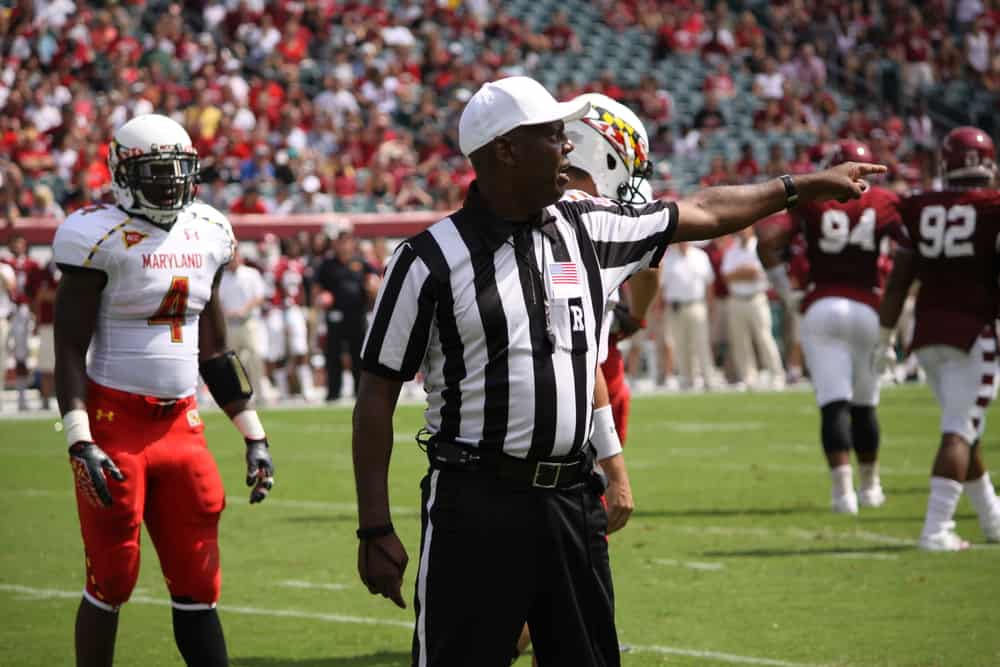
The main reason for the block in the back rule is to promote player safety and prevent dangerous blindside hits. Blocks in the back often occur when a player is not expecting contact from behind, leaving them vulnerable to serious injury. Getting hit from behind when a player’s guard is down increases the chances of head, neck or back trauma.
By making it illegal, the block in the back rule aims to protect players from blindside collisions to the head and spine area that they cannot brace for. It forces blockers to engage with opponents from the front, allowing the opponent to see the contact coming and protect themselves. Overall, the rule exists as a safety measure to prevent unnecessary injuries during returns or broken plays when players may be more susceptible to dangerous blindside blocks.
Controversial Block In The Back Calls
Some of the most famous controversial block in the back calls have sparked intense debate among fans, players, and analysts.
In the 2019 NFC Championship game, the Los Angeles Rams benefited from a questionable no-call on an apparent block in the back by cornerback Nickell Robey-Coleman that helped the Rams reach the Super Bowl. The missed call was considered one of the worst officiating mistakes in NFL playoff history and led to rule changes allowing coaches to challenge pass interference calls.
During a Monday Night Football game in 2019, a block in the back by Green Bay Packers tight end Robert Tonyan wiped out a touchdown by teammate Aaron Jones. While the block appeared ticky-tack by some analysts, others argued it was the correct call per the letter of the law. The controversy sparked debate about whether the rule should be amended to allow for more incidental contact.
In the 2020 AFC Championship, Kansas City Chiefs defensive back Daniel Sorensen delivered a crushing block on Buffalo Bills wide receiver Gabriel Davis that appeared illegal upon replay but went uncalled, helping the Chiefs advance. The non-call outraged Bills fans and renewed scrutiny around inconsistent enforcement of the rule.
Controversial non-calls and incorrect calls on blocks in the back often play decisive roles in critical games, fueling debate on the rule’s interpretation and enforcement.
How To Avoid Committing
When trying to make a block, it’s important for players to keep proper form to avoid committing a block in the back penalty. Players should focus on keeping their head up and seeing what they are going to block. Leading with the shoulder or back when going for a block often results in making illegal contact.
Instead, players should keep their eyes up, turn their body to face the opponent, and drive through the block by extending their arms. By squaring up and facing the opponent, it becomes a legal block from the front rather than an illegal block in the back. Staying low and driving up and through the block with good technique will allow defensive players to legally block without getting flagged.
Coaching Tips
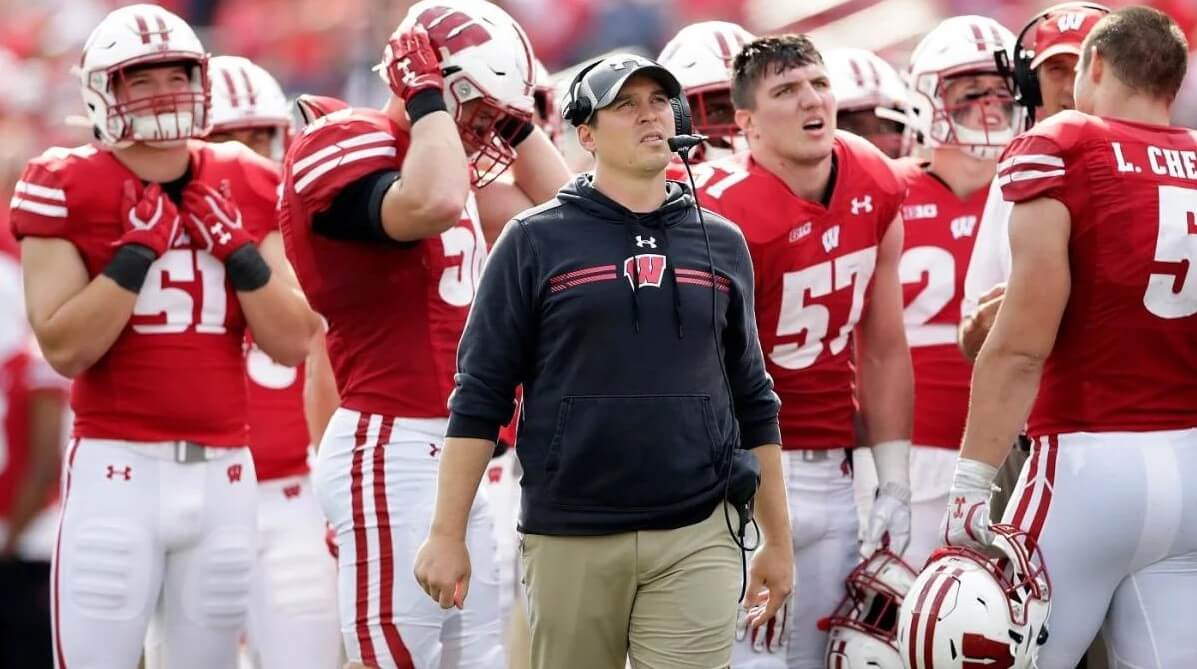
Coaches play a key role in teaching proper blocking technique to avoid blocks in the back.
Some tips include:
-
Focus on footwork and body positioning. Blockers should move their feet to get in front of the attacker, rather than reaching backwards. Proper stance is crucial, with knees bent and weight balanced.
-
Emphasize controlled contacts. Blockers should aim for a controlled touch on the ball or attacker’s arms/hands. Reckless, blind swiping can often lead to blocks in the back.
-
Drill peripheral vision. Blockers need to see both the hitter and the ball simultaneously. Cues like “see ball, see hitter” help reinforce this.
-
Master timing. Blockers must time their jump properly to meet the ball at its highest point. Jumping too early risks the block being late.
-
Stay square to the net. Twisting or turning sideways exposes the back and increases block in the back chances.
-
Focus on footwork and body positioning. Blockers should move their feet to get in front of the attacker, rather than reaching backwards. Proper stance is crucial, with knees bent and weight balanced.
With dedicated repetition and training, blockers can learn proper techniques to legally block attacks. Coaches play a vital role in developing these skills.
Impact On Game Strategy
Illegal blocks in the back can significantly impact game strategy and field position. Coaches emphasize avoiding these penalties, as they can negate big plays and result in lost yardage. For example, a long punt or kick return could get called back due to an illegal block in the back, costing the returning team valuable field position. Similarly, a big run play could get negated by an offensive block in the back downfield.
To avoid these crucial penalties, coaches drill proper blocking technique, especially for special teams players who are often in pursuit and at risk of illegal blocks. Defensive backs are also coached to stay square and focused when blocking, to avoid turning their backs and inadvertently blocking in the back. Overall, avoiding blocks in the back is a point of emphasis because giving up 15-yard penalties can flip field position and momentum. Coaches may also factor these risks into play calling, being more conservative in situations where a penalty could be especially costly.
Conclusions
Blocking in the back is an important rule in football that impacts game strategy and player safety. This illegal block occurs when a player contacts an opponent from behind above the waist to prevent their forward progress. The main reasons for the rule are to promote fair play by not allowing a player to be hit without seeing it coming, and to avoid dangerous collisions that can cause injuries.
The standard penalty for a block in the back is 10 yards, and it can be assessed during the return on punts, kickoffs, and turnovers. While often controversial when they occur, these penalties are intended to keep the game safe and competitive. Coaches must coach proper blocking technique to avoid blocks in the back, and players should keep their heads on a swivel to avoid being blocked illegally.
In summary, the block in the back rule has been an integral part of football for decades. It requires all players to block and defend ethically, and helps make the game safer. While fans may disagree on occasion with the referee’s judgment, prohibiting blocks in the back ultimately promotes fair play and respect between opponents.


